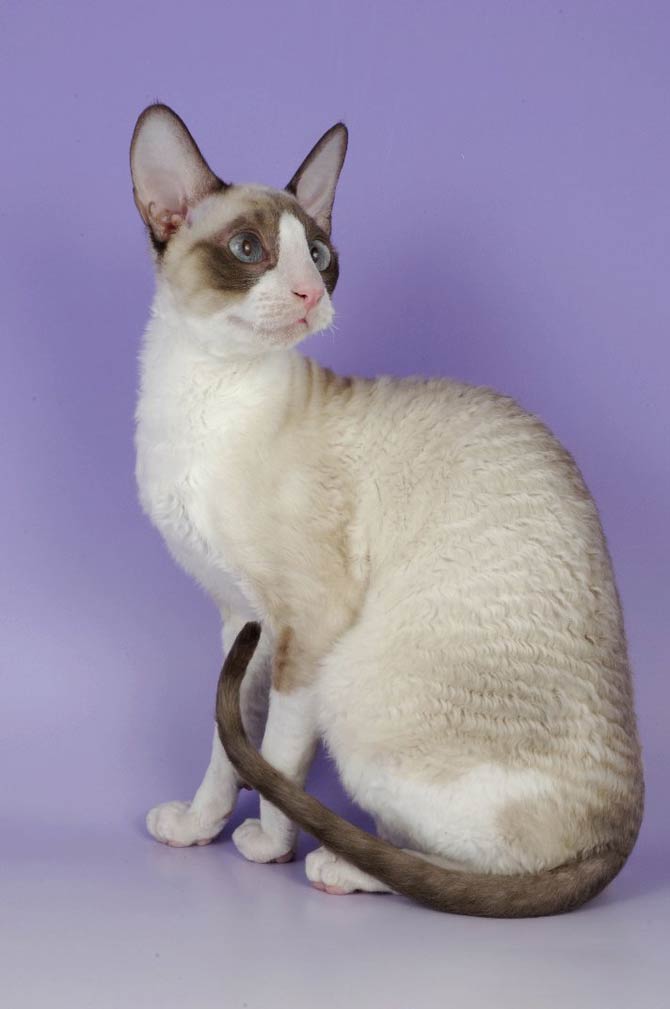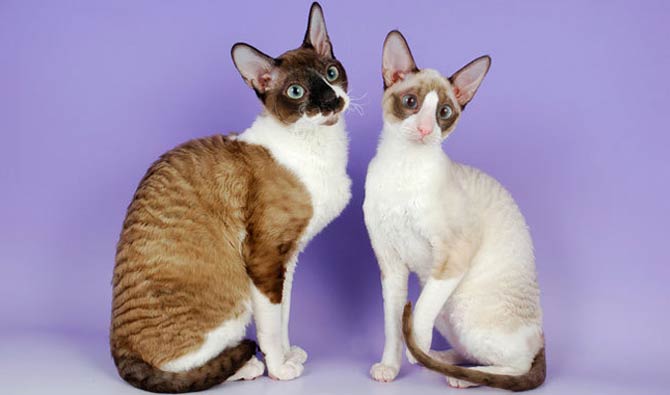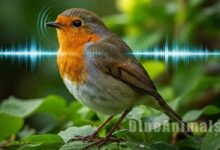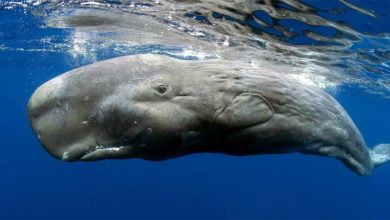Cornish Rex cat
A retrieving cat with the appearance of a Siamese cat? Sounds intriguing, but it carries a lot of truth.. The Cornish Rex is a breed that is very distinctive not only for its huge ears and for curls, but also for its friendly disposition. The appearance and, to some extent, temperament inherited from Siamese cats qualify the Cornish Rex breed as one of the most active and fun-hungry. That is not all that can be said about this British breed.
FIFe classification
- Category III: Shorthair cats
- EMS code: CRX
- Other names: Rex, Corny, Cornies
- Country of origin: Great Britain

History and origin of the breed
The first representative of the Cornish Rex was discovered on July 21, 1950 on a farm in Bodmin Moor, in the county of Cornwall (England). On that day, 5 kittens were born – descendants of domestic cats.
There was one orange-white male in the litter, additionally covered with small curls. The pet was named Kallibunker. He was clearly different from the rest of the siblings. The cat’s coat was very short, curly, and the silhouette, unlike the mother and the rest of the litter, was elongated and lithe. There were large, protruding ears on the wedge-shaped head. The cat’s owner – Mrs. Ennismore – surprised by the appearance of the animal, contacted a British geneticist who said that the cat’s fur was very similar to that of Rex rabbits.
Niny Ennismore (at the instigation of the geneticist) crossed an unusual male with its mother. In the next litter there was one kitten with straight hair and two with curly hair. In the next litters of this pair there were also kittens covered with curls. Two representatives of the new breed were transported to the USA in 1957. One of them died shortly after their arrival, the other survived and became the breed’s progenitor in the United States. There, too, the breed was crossed with Siamese cats in order to lengthen the tail and enlarge the ears.
The breed thus arose from a spontaneous genetic mutation that was merely maintained.

Characteristic
Appearance
For a European breed, the Cornish Rex is a cat with a very exotic appearance. Soft, delicate fur, forming into charming curls, covers a slender, long silhouette. The head is wedge-shaped, it is 1/3 longer than it is wider. Under the rounded forehead, there are high-set cheeks, and between the oval, large eyes we can see a long muzzle. On the top of the head, there are large, protruding ears.
The silhouette is a legacy of the Siamese cat with which the breed was willingly crossed. The torso is slender, the chest is deep, and the waist is narrow. Thanks to the strong muscles of the hips and thighs, this cat is great at jumping. Grace with every movement is possible thanks to long and slim limbs ending with round paws.
Due to the length of the limbs, it could be said that the Cornish Rex is the opposite of the Munchkin cats, which are not blessed with long legs.
The long silhouette is crowned with an equally long tail, which tapers towards the end. Although visually the Cornish Rex seems to be a light and delicate cat, its real weight may surprise you, as the cat can weigh up to 4.5 kg.
There are many colors within the breed, including white, black, blue, lavender, red, cream and chocolate cats. The dominant patterns of Cornish Rex cats are tortoiseshell, calico and colourpoint, but other color types are perfectly acceptable. The color of the eyes depends on the coat color. So you can see golden, hazel and green irises.

Temperament
For many, it seems to be an inaccessible and proud cat. In fact, however, the Cornish Rex is full of joy, charm and love for its owners. It loves all kinds of games, it can do tricks and surprise viewers with agile jumps. Since the paws are equipped with long fingers, the cat can use them to manipulate objects and even open doors and cabinets.
It likes people, that’s why it stays close to them every day. It likes to spend time on the owner’s lap, who strokes and kisses him. Since it approaches care with affection, it shouldn’t cause problems with the vet or training with the behaviorist.
It runs fast and is sometimes called a greyhound among cats. It is physically active and is in motion almost all the time. When it runs, it is graceful – it takes off like lightning and neatly takes turns. Due to its mobility, Cornish Rex, despite its family disposition, is not suitable for slow, inactive and calm people.

Health condition
Both purebred cats and hybrids can suffer from certain diseases. We include among them:
- Umbilical hernia – in this condition, part of the intestine and other internal organs protrude beyond the abdominal wall. It is unlikely to be related to genes, and the last documented case of a hernia in Cornix Rexs was in 1997.
- Hypertrophic cardiomyopathy – a heart disease inherited in breeds such as Maine Coons (the genetic basis of this disease has not been confirmed in Cornish Rexs).
- Genetic alopecia. A recessive gene is probably responsible for this disease.

Detailed data / size
Cornish Rex cat
- Height at the withers: 30 cm
- Weight: 2.5-4.5 kg
- Lifespan: 9-15 years

Cornish Rex cat – interesting facts
- The name of the breed was adopted from Rex rabbits due to the curly hair that occurs in both species.
- Kittens are covered with characteristic curls at birth. As they grow up, their coat may straighten, but it will return to its original form over time.
- Cornish Rex can act like a hunting dog – it runs after the toy thrown by the owner and retrieves it.



















